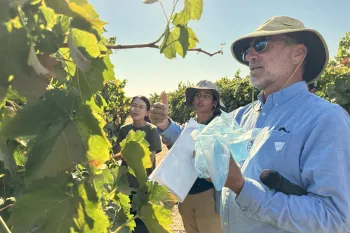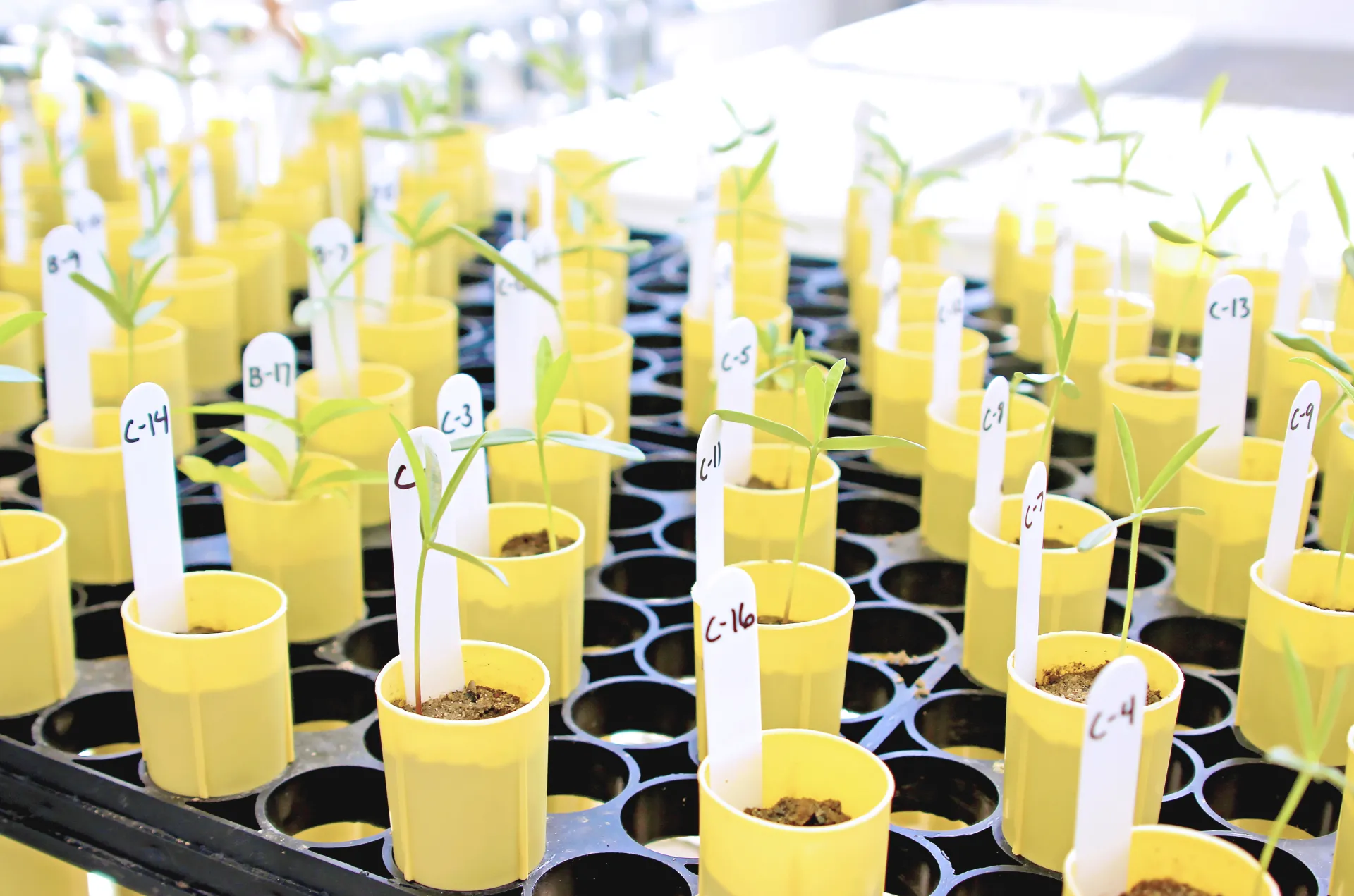Kearney Agricultural Research and Extension Center

Welcome
Since its official dedication in 1965 Kearney Agricultural Research and Extension Center (KARE) has achieved international acclaim for leadership in the development of new fruit, nut, and grape varieties, innovative cultural and irrigation practices, pest and disease management techniques, and postharvest biology. In addition, KARE plays a leadership role in maintaining the quality of California's rural environment, with programs in air and water quality, and mosquito management. Please enjoy our website and give us feedback concerning the site.
Upcoming Events
Growing With Biochar
Wednesday, December 10th, 2025
8:00 am – 5:00 pm
The US Biochar Initiative and American Farmland Trust are excited to invite you to Growing with Biochar, a free full-day training designed to equip you with the confidence and knowledge to support farmers in adopting biochar across various cropping systems.
If you're interested in biochar but uncertain how to begin, this training is for you! You'll gain:
- Hands-on knowledge of practical biochar applications.
- Proven tools and resources for implementation.
- Valuable peer connections to integrate biochar into farming practices that boost soil health and climate resilience.
Join us by clicking on the link below to register.
Registration is required, and space is limited. Seats will be allocated on a first-come, first-served basis, so we strongly encourage early sign-up to reserve your spot!
Growing With Biochar Seminar Flyer
Register for the Growing With Biochar Seminar at Kearney Research and Extension Center here
2025 Kearney Research and Extension Center Field Day
Nematode Management in Walnut and Almond
Tuesday, December 2nd, 2025
8:00 am – 12:00 pm
Plant parasitic nematodes are continual threat to tree nut production. With recent changes, sustainable and cost-effective management strategies are urgently needed. Challenges in the almond and walnut industries have similarities and also noteworthy differences. The topic will be covered for both crops concomitantly. At this field day, alternative management strategies and their development will be discussed. Successes in rootstock development will be demonstrated. The newest in development of preplant soil treatments will be shared.”
2025 Field Day Flyer
Register for the 2025 Field Day Here
Opportunities for Research and Extension at KARE
KARE’s research focuses on sustainable farming, pest management, specialty crops, water conservation, nitrogen management, and postharvest technology, supporting innovation in crops such as citrus, grapes, nuts, and stone fruits. The center provides long-term research support with expert staff, labs, conference facilities, and technical resources to advance agricultural research, extension, and education.
Learn more about KARE's research focus (PDF)
Nuts About Pistachios: Did you know?
Job Opportunities
If you are interested in working for UC ANR or Kearney Research and Extension Center, visit UC ANR's career website to see current job openings.
Current Openings
Administrative Assistant 2
Under the direction of the Business Officer, performs a wide range of daily business operations in the KARE Business Office. Responsibilities include: preparing and reconciling purchasing card reports, entering timesheets, and processing purchasing transactions. Processes financial activities such as cash collections, recharges, invoices, and accounts receivable.
Learn more about the administrative assistant position
Cooperative Extension Fruit Postharvest Area Advisor Serving Fresno, Madera, Tulare, Kings, and Kern Counties position open
The University of California, Agriculture and Natural Resources (UC ANR) invites applications for a UC Cooperative Extension Fruit Postharvest Area Advisor serving Fresno, Kern, Kings, Madera, and Tulare Counties, at the Assistant rank. The advisor will develop an innovative multi-county applied research and extension education program to support the fruit industry in the San Joaquin Valley.
Learn more about the advisor position


